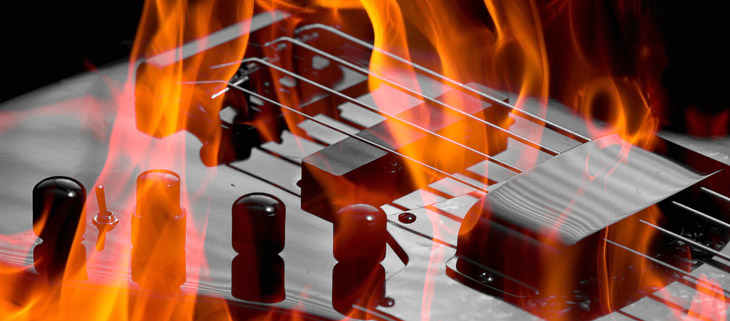Progressive Metal is metal with something extra. Also, there are some artists who integrate jazz or electronica into their metal. Some integrate hip hop or folk. Most integrate symphonic classical styles and compositions.
Some go a piece Avant-Garde; like Spiral Architect, Zoroaster, and Sikth; pushing the purported “cerebral” nature of their music past what most are even happy with paying attention to.
Then some combine multiple elements of many styles. Symphony X, Dream Theater, Ne Obliviscaris. These folks can go from Latin Accordion salsa to Cookie Monster snarling in 2 beats and making it sound consistent. All-in-all, Progressive Metal is Metal +. It’s an acquired taste. Not everyone likes it.
Moderate metal is difficult to isolate in sub-sorts anyway; different penchants or advancements have been essential to the development of its sound.
1. Conventional Progressive Metal
The style created by the pioneers was completely settled during the 1990s and incorporates a scope of groups from the different sides of the Atlantic. Genuine models in this development are SAVATAGE, which extended their weighty metal beginnings with operatic and moderate components in the late 80’s/mid ’90s, while SHADOW GALLERY and SYMPHONY X arose with a remarkable sound, each exemplifying a solid dramatic, musical, and melodic methodology. In Europe, SOUL CAGES proceeded with the tradition of SIEGES EVEN in a more creative way.
2. Power Progressive Metal (American style)
The tradition of RIOT (the partner of NWOBHM sound in the USA) and the early arrivals of QUEENSRYCHE and FATES WARNING intensely affected various groups that were to foster a typical sound towards the last part of the ’80s. Among the notable agents of what is called American Power Metal (for example Horrible RUMORS, HELSTAR), few groups advanced their sound with moderate and epic components. Likely, the clearest instances of this development are CRIMSON GLORY and HEIR APPARENT.
3. Power Progressive Metal (European style)
This class incorporates an expansive scope of groups that could sound genuinely not at all like one another yet their music is essentially impacted by the European Power Metal (basically German) groups of the ’80s (for example HELLOWEEN, RAGE, RUNNING WILD). The most punctual models are likely BLIND GUARDIAN, ANGRA (albeit Brazilian, their sound is principally European), and CONCEPTION. Somewhat later, VANDEN PLAS, ROYAL HUNT, ELDRITCH, and LABYRINTH led to the prominence of the class in Germany, Denmark, and Italy individually. The musical and neo-traditional components (made famous by YNGWIE MALMSTEEN) likewise discovered their direction through power metal with groups like RHAPSODY OF FIRE and NIGHTWISH, whose style doesn’t qualify as being moderate for some individuals. By the way, their music is very exhausting to play and contains numerous components of genuine old-style organization and structure.
4. Current Progressive Metal
The second 50% of the ’90s and the mid 00’s additionally sawed recently shaped groups extending the limits of Traditional Progressive Metal through various ways: presenting electronic/spacey components, putting vigorously in lyricality as well as special timing and further rhythmical experimentation. Additionally, the possibility of specifically reasonable collections has returned as per the acts of the Progressive Metal pioneers. Notable models in this classification are AYREON, PAIN OF SALVATION, and RIVERSIDE.

